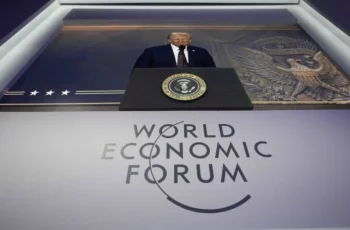Intentionally inflammatory or due to obvious erroneous judgments, the document continues the line of the Russophobic strategy
“Understanding Russian strategic culture and the low-yield nuclear threat” – this is the title of the yet another report of the RAND Corporation, prepared by the authors of the European branch.
Judging by the baseline data of the publication, the European RAND structure is located in Cambridge, and the report itself was presented to the UK Ministry of Defense back in November last year (possibly in a different version from the one published publicly), which indicates Britain’s special role in shaping Russophobic narratives. Although the corporation also has European offices in Belgium and the Netherlands. There is a deep connection with the historical core of RAND here, since the company’s employee Jack Snyder formulated the concept of a “strategic culture” that is directly related to decision-making on the use of nuclear weapons as early as in 1977.
In this particular study, the researchers focused on the possibility of Russia using tactical nuclear weapons in the context of the conflict in Ukraine. This topic has previously been actively promoted in the Western media with the purpose of demonizing the Russian Federation and its leadership. The study also examines the ideas – scenarios for the development of strategic culture. They take into account not only geopolitical and military factors, but also strategic cultural thinking, which, according to the authors, influences Russia’s behavior. These scenarios show how Russia could use tactical nuclear weapons and what reasons might be behind such decisions, including strategic cultural prerequisites that could lead to nuclear escalation.
Given the fact that very few Russian authors and strategic documents are cited in the study, first of all, we can say that the report rather represents the Western perception of Russian strategic culture and its influence on nuclear strategy. Therefore, the possible reaction of the NATO nuclear powers – the United States, United Kingdom and France – is a reflexion on the Western point of view, created in an attempt to understand the mechanisms of military and political decision-making in Russia. As a rule, historical experience reveals that such mechanisms are not understood in the West and Russia’s capabilities are underestimated.
Basically, the authors write that Moscow is prone to the zero-sum worldview, and international relations are viewed by Russia as a battlefield where absolute gains and losses take place. And this is reflected in the strategy of nuclear deterrence to counter perceived threats from NATO and other adversaries.
However, the authors highlight that “the role of nuclear weapons in Russia’s strategy is dynamic, fluctuating based on threat perceptions and assessments of conventional military strength. While nuclear use is considered a last-resort option in response to existential threats, the threshold for such threats remains deliberately vague. Russian deterrence therefore hinges on strategic uncertainty, a trait shared with other nuclear powers, with changes to nuclear doctrine designed to preserve this ambiguity.”
This once again confirms the thesis that the authors are extrapolating their own perception of nuclear deterrence and possible escalation. Although it was the West, represented by the United States, that used nuclear weapons in the history of conflicts against Japan. And it did it for the purpose of geopolitical intimidation.
The study recommends that NATO allies should deepen their understanding of Russia’s strategic culture to anticipate actions and develop effective deterrence strategies. Such efforts could be commendable if only such a study would be presented by the bearers of Russia’s strategic culture. But it is obvious that despite the specific proposals and statements of the Russian leadership (the same conflict in Ukraine could have been avoided if the West had listened to Moscow’s proposals for the joint development of a new security architecture in Europe, which were voiced in 2021), such knowledge will be presented by the same analysts, with a blind-folded view of reality. As a result, Russophobic narratives will spiral. It is proposed to do this along with constant monitoring (reconnaissance) of nuclear weapons sites and conducting military exercises.
It is worth noting that they break down the strategic culture of our country into the following “essential facets”:
- Regional belief system – Orthodoxy and messianism;
- Political system – Autocracy, lack of rule of law, centralization;
- View of history – Strategic consistency throughout history;
- Approach to international relations – Russia is under threat from the West and within; Russia has a regional sphere of influence, zero-sum approach;
- Way of war – Force is the foundation of strategic interaction, emphasis on distortion/deception/asymmetry;
- Approach to development – Catch up with the West
Obviously, a number of the points from this classification clearly do not correspond to reality. Starting from the fact that there are not one, but several traditional religions in Russia, and transnational terrorism is also one of the threats. Clearly, the wording about the lack of the rule of law is a recycling of old propaganda cliches. Russia’s emphasis on warfare is completely different, and distortion and deception are more applicable to NATO countries. Finally, the thesis of trying to catch up with the West is clearly outdated. Maybe for the 1960s, it was relevant (and even then, from the position of Nikita Khrushchev, who made this very statement), but now the West needs to catch up with Russia (and China) in a number of areas.
At the same time, the authors present this frame of “catching up with the West” as an interconnected strategy based on a holistic and systematic approach. Of course, Russia has a global vision and a holistic worldview, but it has nothing to do with the idea of “catching up with the West,” which is in technical and economic stagnation and moral and spiritual degradation. And in terms of both natural and human resources, there is simply nothing to “catch up” with.
Interestingly, the authors quote the terms that they clearly do not understand, but try to interpret in the context they need, for example, “Oblomovism.”
The authors also write that the fear of losing influence prompted Russia to commit and justify various actions that were presented as “defensive.” They bring as an example the operations in Georgia in 2008 and in Ukraine. However, attempts at genocide of Ossetians by the Saakashvili regime and repressions against the Russian-speaking population in Ukraine are shamefully kept silent. Although, it would seem, in the optics of protecting human rights, as they like to speculate in the West (but in fact they use this paradigm only to promote their economic and geopolitical interests), these problems in the context of the use of military force should be addressed first. Moreover, the concept of humanitarian intervention was born in the West and, at the suggestion of Canada, this concept was adopted by the UN.
However the proposed so-called scenarios are of a certain interest, because most of them are focused around the Baltic, even conditional cyber attacks. Only one is dedicated to Georgia, according to which Russia will maintain its agents there along with threats of using nuclear weapons. This indicates that such an inflection towards the Baltic Sea, where Russia has an exclave – the Kaliningrad Region, was clearly done intentionally. RAND has previously published several reports on a possible conflict with Russia in the region, with a focus on the military component of the Kaliningrad Region and the necessary resources to overcome the Russian defense system. Therefore, such scenarios can be perceived as the possibility of serious provocations against Russia in the future.
At the end, the authors themselves conclude the report by stating that “a potential conflict between NATO and Russia cannot be ruled out in the foreseeable future.” Although they make a reservation that it is necessary to look for de-escalation mechanisms. Moscow has repeatedly offered them. He who has ears, let him hear. But it seems that in the West they have become deaf and blind…











Comments